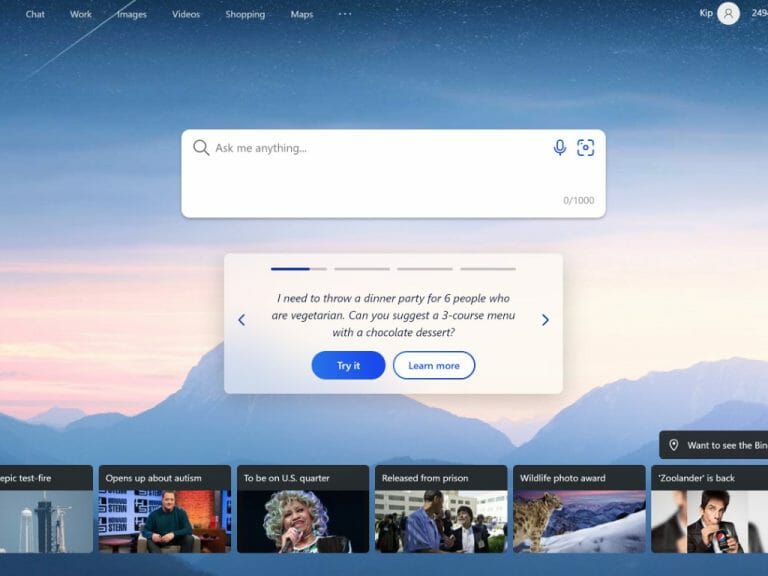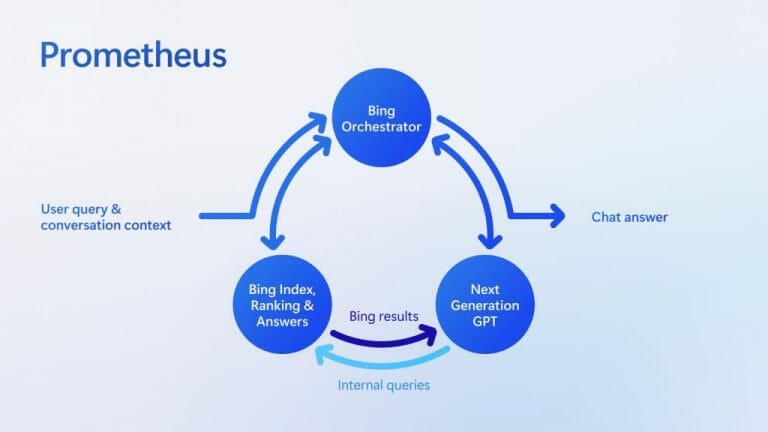When Microsoft announced the new Bing on February 7th, they didn’t spend much time talking about Prometheus, the customized version of Chat GPT that powers Bing Chat. We knew it was a newer version of ChatGPT than what powers the standalone ChatGPT 3.5, and early rumors said Microsoft was using ChatGPT 4, but Prometheus is more than that.
In a blog post on LinkedIn, CVP for Search & AI Jordi Ribas goes into a bit more deal on just what Prometheus is and what it does.
Ribas starts by saying that Microsoft first saw the “next generation GPT model” from OpenAI last summer, calling it “game-changing.” They were then inspired to “explore how to integrate the GPT capabilities into the Bing search product,” although there are some indications that Microsoft was working on integrating a chatbot into Bing well before that.
Similar to other Large Language Models (LLMs), this new GPT model was trained on existing data, but with Prometheus, Microsoft wanted to combine this LLM with “the power of Microsoft’s back end:”
To be more concrete, we developed a proprietary technology we call Prometheus, which is a first-of-its-kind AI model that combines the fresh and comprehensive Bing index, ranking, and answers results with the creative reasoning capabilities of OpenAI’s most-advanced GPT models. Prometheus leverages the power of Bing and GPT to generate a set of internal queries iteratively through a component called Bing Orchestrator, and aims to provide an accurate and rich answer for the user query within the given conversation context. All within a matter of milliseconds. We refer to this Prometheus-generated answer as the Chat answer.
This “Bing Orchestrator” uses a techique called “grounding” to provide “relevant and fresh information to the model, enabling it to answer recent questions and reducing inaccuracies.”
Ribas goes on to describe some of the decision making behind how to build chat into Bing; some leaned toward a User Experience that would “keep the UX like today’s web search and simply add the Prometheus-powered Chat answer on the main UX.” Others saw an “opportunity to change the search paradigm from the classic web and answers results to a new interactive, chat-based way of searching.”
What they did was to do both, to come up with a design that would “smoothly transition between Search and Chat modes based on the user’s intent and preference,” and so you see the new UX we have today, with users being able to switch easily between Chat and Search and back again.
Ribas says that a key goal of the new Bing preview is to gather feedback to be able to apply these grounding techniques incorporating live Bing search answers with the large language model responsibly. He says that Microsoft has “learned more in the first two weeks from real users than in several months in the lab,” and mentions the changes to cap long sessions and improve grounding data as early lessons learned.
Finally, Ribas believes that the new Bing is “is bringing search to this next level of innovation. I truly believe that search will never be the same.”
Microsoft has already made some changes to the way the new Bing Preview works, capping chat sessions (and then upping the caps), and they’re promising more as soon as this week, including allowing more people into the preview.
Are you able to access the new Bing? Let us know in the comments below.



